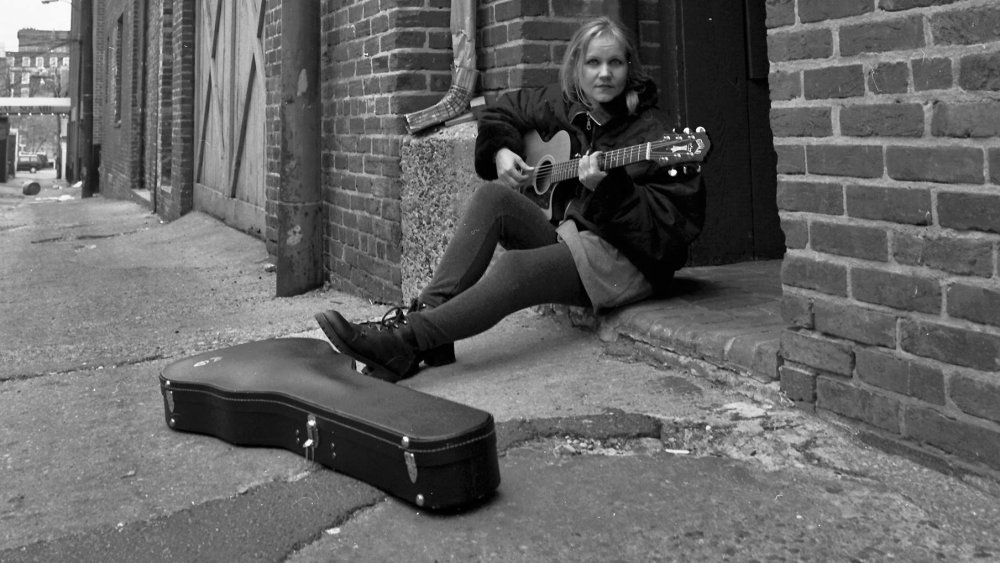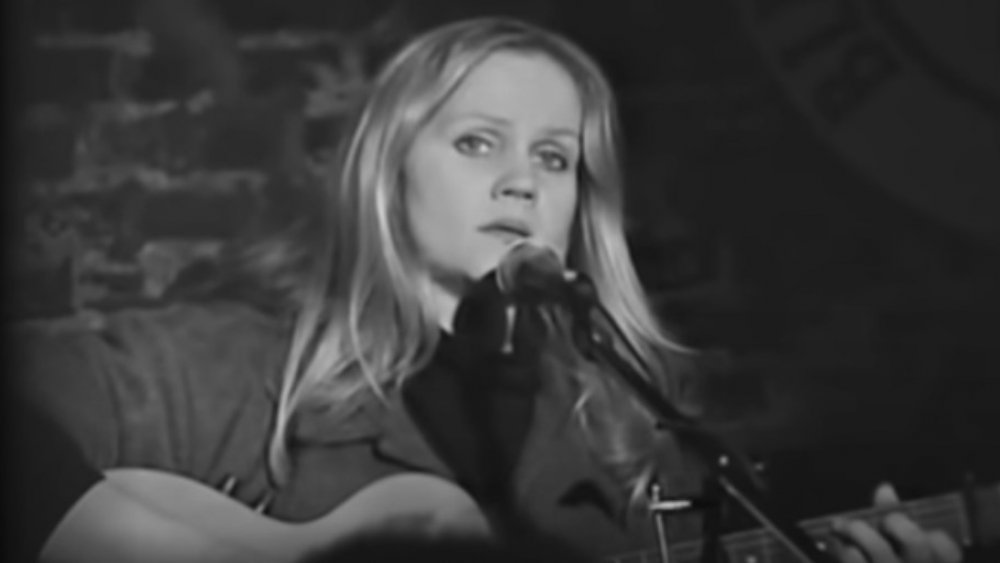The Tragic Death Of Eva Cassidy
The sweet soprano of Eva Cassidy singing standards like "Over the Rainbow" feels both divine and sorrowful. Perhaps her life's story insinuated its way into her lilting delivery. While her album, Songbird, sold more than five million copies worldwide — reaching platinum status six times in England and becoming certified platinum in the United States in 2008, according to Grunge News – Cassidy never knew of her success. She died of cancer in 1996, age 33.
The Washington-based singer received minimal attention during her life, according to The New York Times. She performed "in relative obscurity" with recordings that received "minimal radio play on this side of the Atlantic." She released one album, a live jam from the Washington club Blues Alley that she financed and sold from her car to her hometown fans. She started performing there in the mid-'80s when she sang with soul singer Chuck Brown. Together they recorded an album titled The Other Side.
She also worked with Chris Biondo, a recording engineer and musician. The music they created became the album Eva by Heart. By then, Cassidy's cancer was spreading. Her first brush with cancer happened in 1992 when she saw a mole on her shoulder. That melanoma was removed, according to The Independent. "It was believed that the doctors had got whatever vestiges remained of the melanoma," Cassidy's father, Hugh, told the publication. Unfortunately, Eva made the mistake of not following up with her physicians.
She earned recognition posthumously
Cassidy felt pain in her hip and was scheduled for replacement surgery. During her pre-testing, an X-ray showed that the cancer had spread to her lungs. For her final concert, she sang "What a Wonderful World." At the time, Cassidy was undergoing aggressive chemotherapy. Two months later she was dead. Eva By Heart was released posthumously.
Bill Straw, president of Blix Street Records, became her fairy godfather. He received a tape of Cassidy's Blues Alley session. "It didn't take a genius to figure it out," he told The New York Times. "The moment I listened to that tape, I knew this was one of the best singers I'd ever heard." Blix Street released her first nationally distributed album in 1998. The popularity of Cassidy's music grew slowly. It hit big in Britain first, gaining attention from a spot on the BBC Radio 2's morning show. In late 2000, NPR's Morning Edition did a feature on Cassidy, followed by a program on Nightline that spring. Momentum kept building and Cassidy's story was shared by Billboard, Rolling Stone, and other publications. Olympic silver medalist Michelle Kwan used Cassidy's version of "Fields of Gold" in her 2002 exhibition program.
A greatest hits collection, The Best of Eva Cassidy, was released in 2012. All these years later, Cassidy's music lives on. Her rendition of "Time After Time" recently appeared on a Kay Jewelers ad, according to her website. She might be gone, but she's not forgotten.

